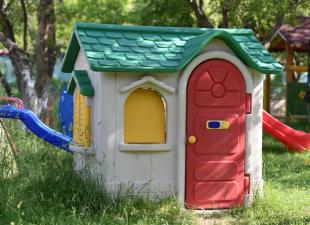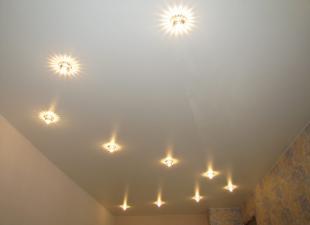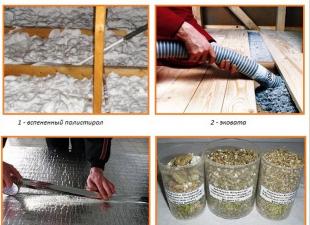Lighting is an important part of any interior design. But not all lighting elements are capable of recreating natural street light. Often, objects falling under the rays of such sources acquire an unnatural shade for them and sometimes glare even in a different color. But among the variety of lighting fixtures sold, there is one type that emits light as close as possible to daylight. These are ceiling fluorescent lamps known since Soviet times. It is they who are able, even in the evening, to clearly illuminate any object without changing either its color or tone.
Ceiling fluorescent lamps
Ceiling fluorescent lamps: pros and cons
Important advantages
Although many fluorescent lamps still evoke associations with Soviet times, today they have received a rebirth and are successfully used in interior design. And if we consider their advantages in detail, it immediately becomes clear why, both today and in those lean and scarce times, such ceiling lighting is more and more in demand.
- The main plus is the maximum energy savings, which is why many consumers still prefer them. This saves up to 80% of electricity compared to incandescent bulbs.
- An equally important plus is the service life. With stable operation, energy-saving fluorescent lamps will last for more than ten years. Agree - this is still an equally important argument in the use of such lighting elements.
- High-quality and powerful emitted light, such lamps, when switched on, do not blur the contours in the interior, do not paint objects in other shades, but, on the contrary, improve the perception of natural colors and the contrast of objects.
- To some extent, these lamps can be attributed to the fireproof category, and the thing is that its maximum heating temperature is only 60 ° C.

Fluorescent ceiling lamps
What are the weaknesses?
- When turned on, such fluorescent lamps do not light up immediately, but after only a couple of seconds, it takes some more time to fully ignite.
- It is impossible to use such sources outdoors in winter, temperatures with a lower mark of + 5 ° C are allowed. Otherwise, the lamps will dim.
- Lamps are sensitive to voltage drops in the mains. And this, in turn, can have a strong negative effect on the final service life of such lamps.
- Chemical hazard - inside the glass tube of such a lamp there are vapors of mercury and phosphorus, therefore it is strictly forbidden to break them.
- To light a fluorescent lamp, an additional trigger is needed, which in general makes the whole device more expensive than a conventional bulb with a socket.
How daylight sources work
Energy-saving fluorescent lamps are also called gas-discharge lamps due to the principle of operation. And it consists in the following: in the glass tube of such a lamp there are mercury vapors and an inert gas, a phosphor is applied to the wall, because of this there is another name for such sources - fluorescent fluorescent lamps. The reaction in the flask is triggered by a trigger that generates an electric discharge, thanks to which the mercury vapor begins to emit ultraviolet light, to which the phosphor on the walls of the flask also begins to react and glows.

Daylight tubular fluorescent lamps
Other features of the fluorescent lamp
The glow color of a fluorescent lamp is different, but there are not many of them at all - this is not even a color, but a shade:
- White light (marking "LB")
- Daylight (LD)
- Cold white light (LHB)
- Warm white light (LTB)
If you decide to purchase such lamps for your home as the main light, then it is better to give preference to the latter. With them, the interior will be more comfortable, and the atmosphere in the evening will be more comfortable.
How are fluorescent ceiling lamps produced?
Such artificial daylight sources can most often take three common forms:
- These are traditional tubular models with lengths ranging from 450 to 1500mm.
- The U-shaped and round models are suitable for small desktops, etc. lamps
- And compact fluorescent lamps
Ceiling discharge lamps of fluorescent light can have very small dimensions for small spotlights on the ceiling.
A variety of shapes allows you to use ceiling gas-discharge fluorescent lamps in lighting fixtures with a shade of square, rectangular, round and oval shapes. They can also be used in different types of luminaires, from single use of bulbous lamps to chandeliers and even spotlights.
Larger model luminaires are often equipped with a special reflective surface to enhance the lighting power. This also contributes to better diffusion of the emitted light, which makes the lighting in the room even more uniform. It is not uncommon for rectangular ceiling luminaires with fluorescent lamps with such a reflective surface to be found in office premises.

Ceiling lamps daylight photo
Fluorescent lamps in the interior
Designers and architects successfully apply energy-saving fluorescent lamps in the design of any interior. Due to the variety of emitted tones, such lamps can be used in any room of a family apartment or house.
They can serve both as the main light and act as a backlight; they are often used in the illumination of suspended ceilings and ceiling cornices. Such lighting will perfectly fit into modern interior design styles: modern and high-tech. There are even stylish chandeliers made from small bulb-shaped lamps of this type on sale.
It would be very appropriate to apply such lighting, of course, in the loft style. Traditional bulb-shaped fluorescent lamps in loft interiors will be very useful, because they were widely used and used in factories and warehouses as the main light to this day.
In other cases, ceiling fluorescent lamps can be used in a different, more compact form and can be covered with various kinds of shades, including fabric ones. There may also be box-shaped lampshades.

Ceiling lamps for fluorescent lamps
 parlini.ru Repair of an apartment, a summer residence and a house.
parlini.ru Repair of an apartment, a summer residence and a house.


